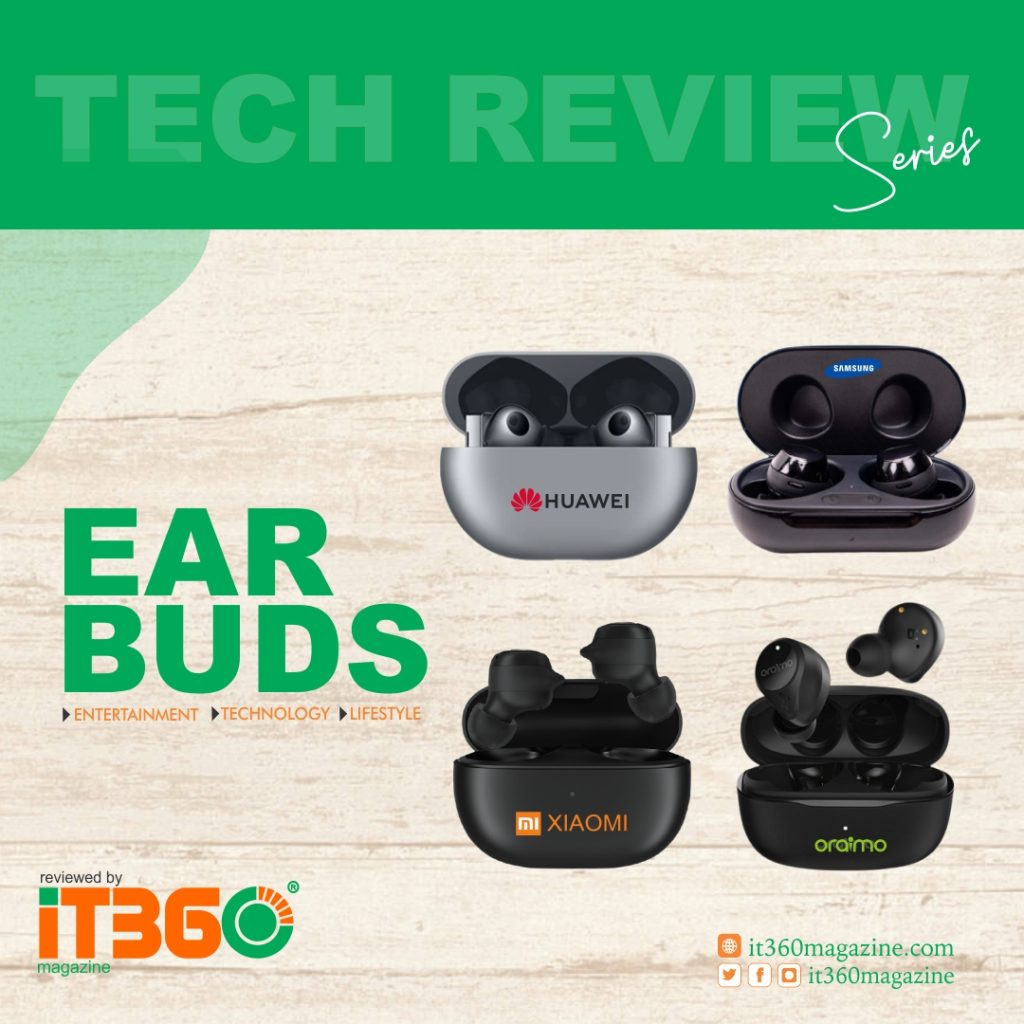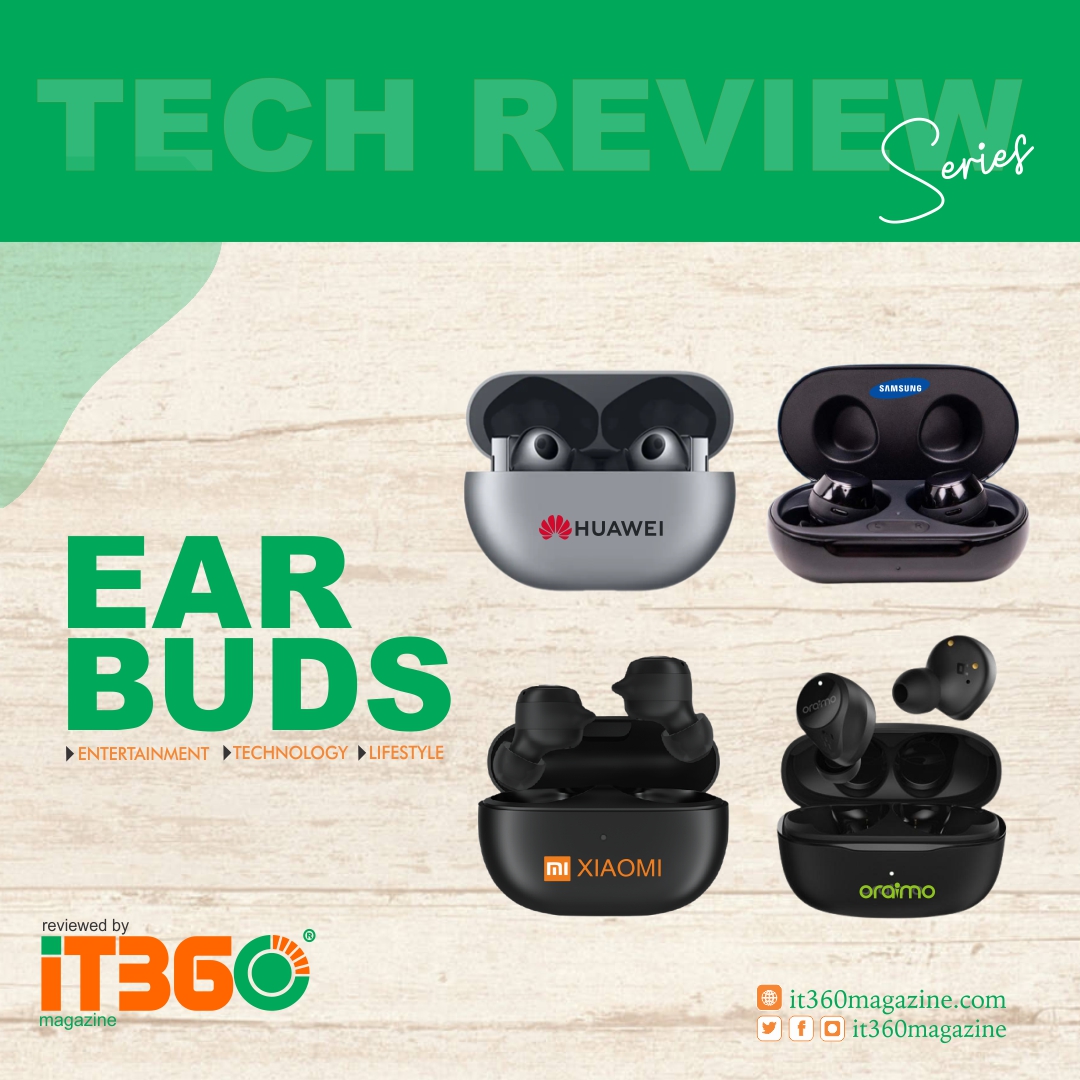EarBuds Review: Entertainment, technology and lifestyle.

Music helps one get along with work, chores, or whatever activity they might be engaged in. While some people prefer to listen to music alone, others love to play music very loudly to feel the beats and vibes. However, they forget to be considerate as the people around them may not be interested in their kind of music thereby causing a nuisance. To resolve this, you may decide to go for an earpiece because it is quite affordable. But, you should bear in mind that an earpiece could be quite uncomfortable especially if you can’t be with your phone at the moment. However, there is a better solution— EARBUDS.
Earbuds were specially made to meet your convenience. Hence, in this article, we would be discussing the history of earbuds, various types of earbuds, and their characteristics (technology).
History of EarBuds
In 2014, a few audio firms were aiming to be the first to launch true wireless earbuds. German startup Bragi started its crowdfunding initiatives on Kickstarter for the Dash back in February 2014, picking up over $3.3 million in just 45 days from nearly 16,000 backers.
Bragi made headlines at CES 2015 with the Dash, drumming up significant interest for the wireless earbuds. The Dash promised truly wireless audio alongside a host of additional features, including the AptX audio codec, activity tracking, heart rate, blood oxygen saturation monitoring, and the ability to tune out ambient sound. At the end of the day, the fitness tracking was inconsistent, and the bone-conduction mic was nearly unusable at launch.
But by 2016, more brands started paying attention to the true wireless segment, with Samsung introducing its first offering in this category in the form of the $200 Gear IconX. These wireless earbuds were aimed at the fitness segment and had sensors to monitor heart rate, distance traveled, and calories burned, but the two-hour battery life made them a nonstarter.
Motorola also dabbled in this category with the $250 Verve Ones+, but like the Gear IconX, they lacked substance. This review will concentrate on well-known brands that make both basic and advanced earbuds. Huawei, Xiaomi, Samsung, and Oraimo are among these brands.
Huawei
In 2018, Chinese smartphone giant Huawei released a pair of wireless headphones that look strikingly similar to Apple’s AirPods, called the Huawei FreeBuds. Huawei FreeBuds were announced alongside the firm’s new P20 Pro smartphone. The Huawei earbuds were made to be cheaper than the Apple Airpods even with the striking resemblance with good qualities and of different colours. The FreeBuds were priced at #40,000
The FreeBuds Pro are the follow-up to last year’s FreeBuds 3, Huawei’s open-fit, wireless noise-cancelling earbuds. The FreeBuds Pro charging case is larger than many of its competitors, its hinge has a pleasing amount of snap and it supports wireless charging in addition to USB-C charging. Getting the buds out of the case can be a frustrating endeavour, however. Huawei Freebuds 4i can be connected to any device through Bluetooth and act as standard wireless earphones.
Technology
Huawei earbuds is a true wireless earbud that provides stereo sound, high resolution, and realistic sounds. The ergonomic design of Huawei is the best design of overall world earbuds. One of the best characteristics of Huawei earbuds is the water resistance. These earbuds are waterproof. This characteristic lasts the overall usability of earbuds. FreeBuds Pro offer the usual range of true wireless earbuds features: touch controls, in-ear detection, a portable charging case (which can be charged wirelessly), and the ability to tweak a few things via the AI Life smartphone app (can be downloaded on Playstore)
It is of importance to note that these are earbuds designed for use with devices running Android. They can pair with iPhones, but as AI Life is not available on the iOS store, users will be hamstrung in terms of how much control they have over the FreeBuds Pro. It is currently priced at £170.
Huawei earbuds are long-lasting and offer long last batteries. The earbuds can even run for 8 to 10 hours after one charge (only for one hour). Most Huawei earbuds weigh 4.5 grams, which is relatively lightweight to put in the ears. 30mAH is the total battery of these earbuds, which is quite reasonable to use for a longer time. Types C is the charging interface of these earbuds with wired styles. The basic premise is the active cancellation of noise.
Xiaomi
Xiaomi launched its very first truly wireless earbuds in November 2018 and has now quickly followed it up with countless other models of wireless earbuds. The Xiaomi earbuds were made to be easily bought with a cheap price range on the earbuds ranging from ₦15,000 to ₦5,000. Looking at the Redmi Buds 3 Pro, they are a nice pair of wireless earbuds for a reasonable price.
Technology
The Redmi AirDots Truly Wireless Bluetooth headset packs a built-in Realtek 8763 chip and Bluetooth 5.0. They also feature capacitive touch controls and a simple double-tap function can be used to summon the voice assistant. It even works with Siri on the iPhone.
The design is modern and comfortable to wear, while the ability to connect to two devices at the same time is more useful than you might think. The lack of volume controls is a downside and the noise canceling is restricted to two modes unless you have a Xiaomi or Redmi device, which seems a poor decision. Battery life is decent with fast charging and wireless charging making them stand out from the budget crowd. They also have another feature that’s unusual for cheap earbuds in ear-detection. It is currently priced at $69.99
Xiaomi claims that these earbuds can last up to 4 hours on their own while the carrying case extends that to 12 hours of playtime. The earbuds themselves charge in 1.5 hours, while the 300 mAh battery in the case needs 2 hours to charge to full capacity. Each earbud also weighs just 4.1 grams which makes them quite handy over longer periods of usage.
Samsung
The Samsung Galaxy Buds are a line of wireless Bluetooth earbuds designed by Samsung Electronics. They were first released on March 9, 2019, as the successor to the Samsung Gear IconX. The Samsung Buds like the Apple Airpods are not so cheap with the price ranging from ₦60,000 to ₦20,000, not all the Samsung Buds are accessible to all.
Looking at The Samsung Galaxy Buds 2 which isn’t a breakout set of earbuds, it does its job well as an everyday headset. The sound quality is sure to please most listeners and the noise canceling, while not the best, is quite good for the price. Even still, you might find it hard to justify this compared to the more advanced Galaxy Buds Pro and more comfortable (and affordable) Galaxy Buds Plus.
Technology
The Galaxy Buds were designed to provide a true screen-free experience for busy people on the go. Its premium sound by AKG gives you an immersive listening experience. Also, its Adaptive Dual Microphone features an inner microphone and an outer microphone that work together to capture your voice more clearly during phone calls. With Ambient sound mode, you can hear your surroundings without the need to take off your earbuds. The quality is already taken care of, you just get to enjoy it.
Furthermore, you can also control your phone without using a screen! The Galaxy Buds can send your voice commands to your phone’s Bixby system for easy control of your phone without taking it out of your bag or pocket. So, you can play music or send messages with just your voice. Bixby also lets you control the Galaxy Buds’ Ambient sound function and check things like the battery level.
Additionally, charging with a cable is no longer necessary. The Galaxy Buds charging case supports wireless charging, so placing the case on a wireless charging pad is all you have to do to easily charge it. It supports the Wireless PowerShare feature for added convenience so you also don’t need to worry about not having a charger when your Galaxy Buds run out of battery. If you have a Galaxy S10, you can simply activate its Wireless PowerShare feature and place it on the back of the beyond to charge your case.
The Galaxy Buds will detect how many earbuds are in its case and will switch the sound output to mono or stereo based on how many earbuds are in the charging case. If you put both Galaxy Buds into the charging case, the music will stop automatically.
Oraimo
Oraimo Airbuds came to light after the Apple Airpods came and the price was high, thereby not giving room for many to experience the beauty of the new invention of earbuds. The Oraimo Airbuds like the Xiaomi Airdots are cheap and easily accessible to people, though not as cheap as the Xiaomi Airdots with the price ranging from ₦35,000 to ₦9,000.
Technology
The oraimo AirBuds come in a glossy black encased within a matte-like black case. The case itself acts as the charger for the earbuds with 500mAh of battery, while each of the ear pieces has a battery of 50mAh in them. The ear hooks on the buds are small and don’t offer much grip when put into the ear.
While the charging case isn’t the smallest we’ve seen, it isn’t too big to pop out of the ‘compact’ category. The micro-USB charging port lies on the front side of the case, above which is a horizontal LED that tells you when your buds or the case itself is being charged. Pulling out the earbuds from the case turns them on and you can then pair them with your smartphone.
The AirBuds sound great considering how budget-friendly these truly wireless earphones are. There is support for HD audio AAC codecs here and that’s a bonus. The AirBuds are heavy on bass. The lows are more pronounced than the highs and the mids and while the bass you get is impactful and you will feel the ‘thump’, it isn’t the deepest bass; but the vocals manage to hold their own. However, with that being said, these are a truly special pair and have to be heard to be appreciated.
Conclusion
Earbuds were created so users can go on with their daily activities without needing to carry their phones or experience any form of discomfort. Consumers they tend to go for an earbud with a good stereo sound and great bass in it. The sound quality is the main factor that determines what consumer opt for and it is directly proportional to the price offering.
Every company has a unique selling point that meets consumers’ need-Huawei earbuds are one of the best earbuds due to their average range, availability, battery life, and convenience. While Xiaomi, one of the newcomers in the production of Earbuds with innovative products and nice prices. But, If you wish to save costs, Xiaomi is your go-to brand. Samsung, like Xiaomi, is also a newcomer in the production of Earbuds but with their brand reputation, they have gained market share. So, I will recommend you go for Samsung in terms of quality, although it may be pricy.
Finally, Oraimo is one brand that has been breaking into the Nigerian tech market which focuses on affordability and availability their earbuds in the local market. Oraimo’s products are likewise of nice quality, with their earbuds being packed with stereo sounds. All these are leading brands that produce quality sound, but you need to know the ones that suit your specific need and fit your budget. We hope above information will guide in making best decision.


